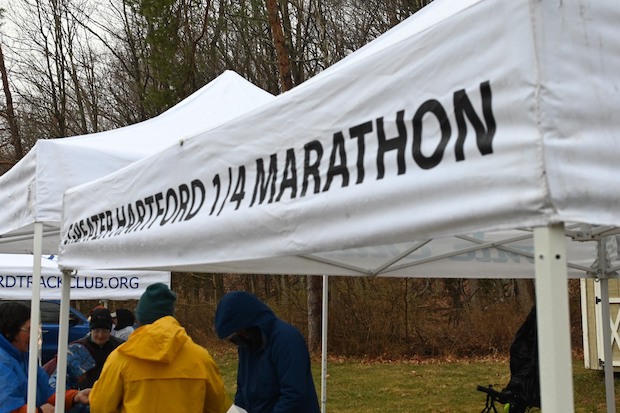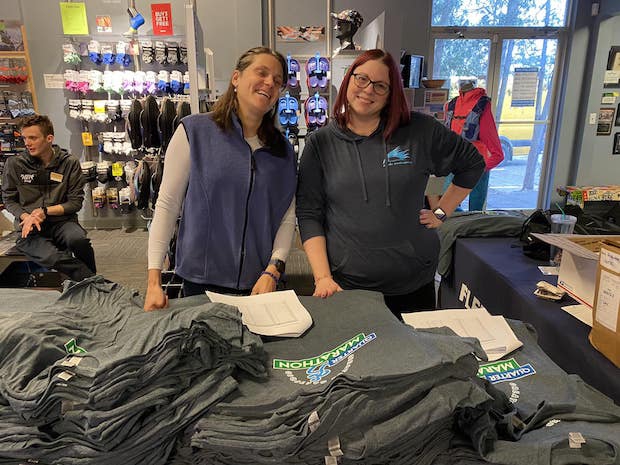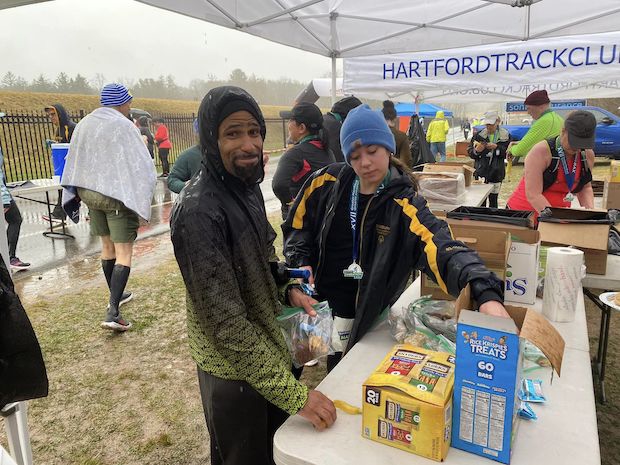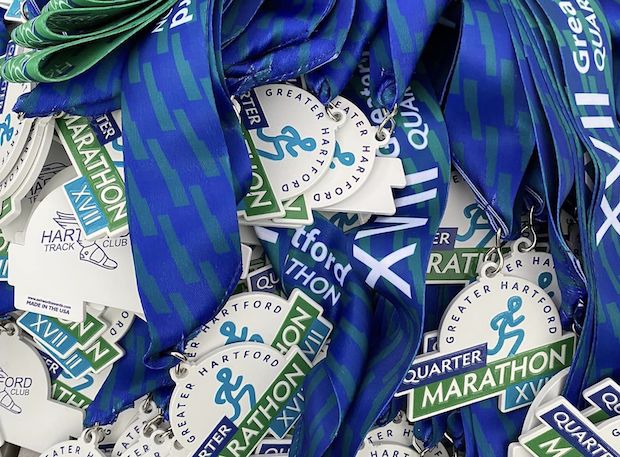Lessons From Race Directing in 2023

I’m going to get what seems to be an obvious statement out of the way up front: if anybody tells you that race production is a good, easy way to raise funds for a charitable partner, immediately laugh in their face.
Now that we’ve gotten that out of the way — 2023 marks my fifteenth year producing running and triathlon races. I’ve transitioned out of producing events as either part of my day job or as my day job. For the last eight years, my wife and I have co-produced a variety of running races in Connecticut, and for the last two years a youth triathlon here in New Hampshire. We just got through producing our first event of the year — the Greater Hartford Quarter Marathon — and wanted to share some of the experiences and lessons we learned that might help both race directors and athletes.
The Comedy of Pre-Race Errors
Whether you produce races full-time or as a volunteer, life will always manage to find a way to throw you a curveball. This year, we managed to have a comedy of errors come up at us that made our normal operations far more difficult.
First was our own time. Kelly is an attorney who is in the midst of negotiating multiple labor contracts while also arbitrating multiple cases. I, in addition to Slowtwitch and our adjacent Media House projects, also work in digital communications and technology. Between work and our daughter’s very active schedule, we found it more difficult than ever to find the hours for pre-race items (from opening registration to ordering key supplies and to our post-race food preparation, and more on that last one in a moment).
Second was me breaking my wrist. Race production is hell on your body when you are healthy and in reasonable shape; I’ve frequently said that it’s easier to race an IRONMAN than it is to work one. The race coming five weeks after putting a die-hole punch in the middle of my right radius was less than ideal timing. Simple tasks like bringing the medals and shirts into the house from our UPS deliveries turned into far more complicated jobs — and made for a hell of a mess in our house.

And then race week threw in one final laugh-so-you-don’t cry moment. In order to help drive cost down and make a larger donation to our partner charities, we traditionally will make the majority of post-race snacks: cookies, Rice Krispie Treats, brownies, etc. This also means a lot of dishes. We’d gotten through one big batch run the Monday before the race and ran the dishwasher that night. The next morning, Kelly ride leads on Zwift, so we went downstairs to pair the computer to find a lot of water near our race supplies. Yep, the dishwasher had sprung a major water leak.
You can’t make this stuff up.
Be Prepared For Attitude
It is an unfortunate reality that, as a race director, you will never be able to please everyone. And it’s also unfortunate that, in my opinion, coming out of the pandemic that we, collectively, have forgotten a little bit on how to be polite in public. This is true across the board — I’ve seen it in every facet of my life — and it is also true with both race producers and athletes alike. Ultimately, I’d implore everyone to take a lesson from the 2018 Triathlon Business International Conference: don’t be a dick.

An example from this weekend where that paid off for all parties. We cut off our race registration on Thursday so that we can print off bib lists and have things finalized before we drive down from New Hampshire. We had an athlete reach out Friday morning to ask about registering for the race. This person’s email was courteous and understanding of why we would do things as a race director. Ultimately we made the decision to allow a registration exception and got this athlete into the field by directing them to just make a direct donation to our partner charity. In a sea of emails where tone is negative, being the positive one made a massive difference.
That being said, though, pushback will come from everywhere — suppliers, permit providers, police, athletes, and more. Just be prepared to fight through with a smile as best you can.
Weather: The Great Normalizer
Producing a running event in early April in New England is not for the faint of heart. Over the prior years of the event, we’ve had everything from 25 degrees and lightly snowing to a sunny 70 degrees and literally anything and everything in between.

But the thing bad weather does do for you, that’s positive, is that it brings out a lot of gratitude. People are more inclined to say “thank you” and “we appreciate it” when weather is more challenging. It’s now three days post-event and I do not have a single negative email about the race experience yet. It’s the first time that’s happened since we had another bad weather day. So yes, conditions can be a force for good.
Last Tidbits
Runners are registering later than ever. More than a third of our race registrations came in the final month. For context, this is a race that used to sell out six to eight weeks in advance. And even with a more aggressive pricing structure in order to charge a premium for late registration (and drive people to register earlier), people still held out as long as they could to make a decision on entering.
Race Directors: Order enough port-o-johns! We ordered six port-o-johns for the race, in addition to the three that are normally at the race site. It worked out that we had approximately one port-o-john for every 30 or so athletes. Coincidentally, this is also the first time in years that this race started at its published starting time — usually because we’re holding for the port-o-john line being too long. This isn’t the place to save on. Factor it into your pricing scheme and order as many as you can fit.
It’s possible to be both a race and an event. Our race attracts both a very fast front of the field with a robust back-of-the-pack party. The key is offering an awesome experience for everybody. Despite difficult weather, the men’s winner set a brand new course record and won our race prime check, as did the men’s masters champion and the women’s overall winner. We wrote a fair number of winning checks. We have lots of awards for lots of categories, including non-binary and five year age groups. But we also make sure that there’s plentiful post-race food and course support for athletes who might be taking 1:30+ for 6.55 miles. That distance matters just as much to them as it does to the folks at the front of the race. Be there for them. Celebrate them. But also don’t assume that it’s their first event, either.

You can still do this and be profitable. It took a lot of effort. In summary, though, we wound up being about $3,500 in the black on the race. That check to our charity of choice will wind up in the mail later this week. It’s getting harder — I wouldn’t want to run the numbers on hours we spent on this and imagine if we ran this as a company — but we still wound up being able to make a sizable donation, bringing us well over $100,000 in giving that these races have contributed since 2013.
Now my list of items starts for our fall half marathon — namely, figuring out which set of forms our DOT friends in Connecticut will want this year for a road use permit.


Start the discussion at slowtwitch.northend.network